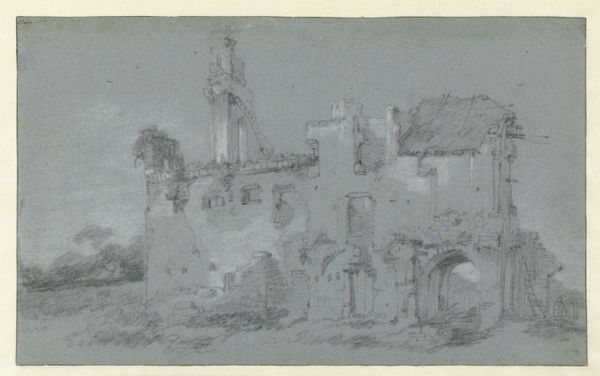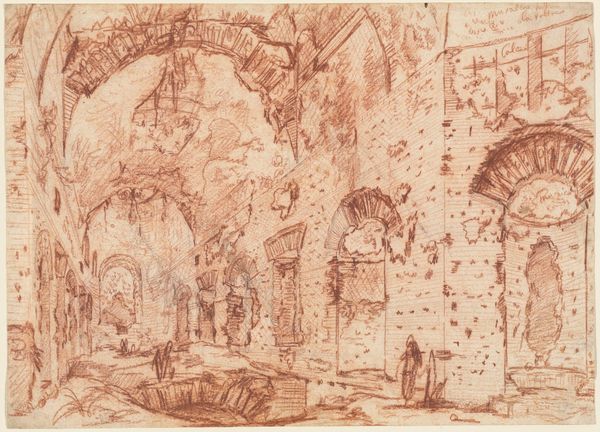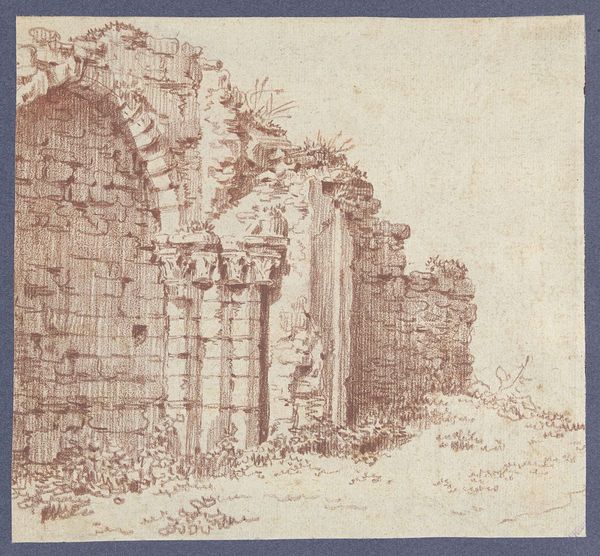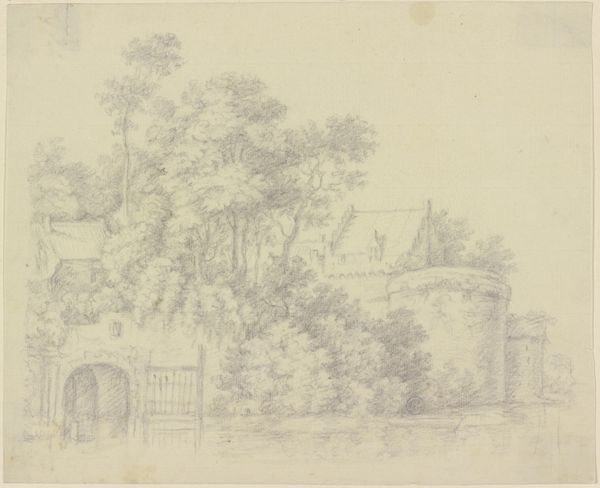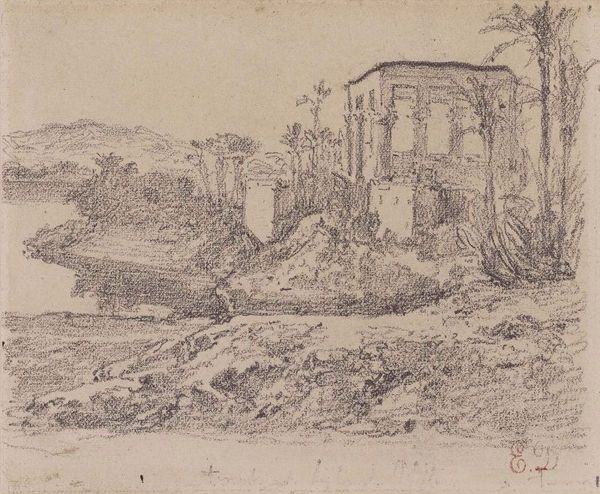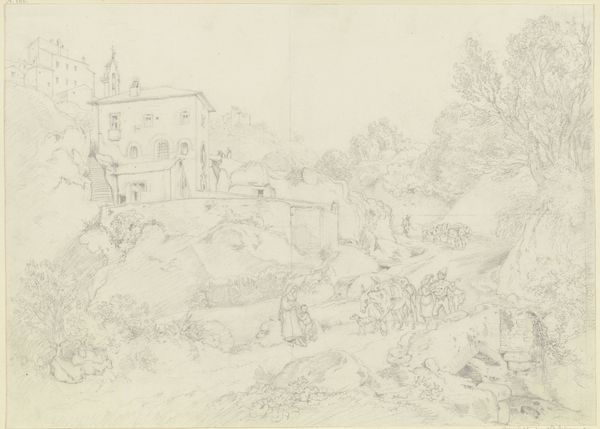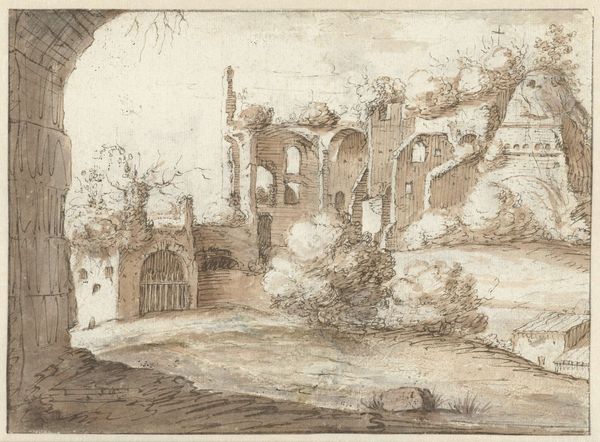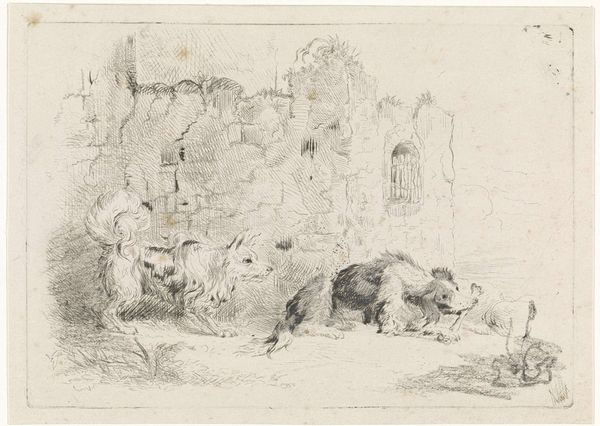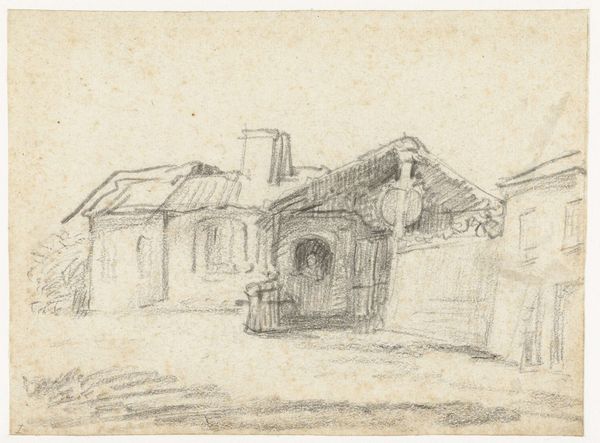
drawing, etching, paper, ink, architecture
#
drawing
#
etching
#
landscape
#
etching
#
paper
#
ink
#
pen-ink sketch
#
italian-renaissance
#
architecture
Dimensions: height 176 mm, width 265 mm
Copyright: Rijks Museum: Open Domain
This pen drawing, made by Jacques Franckaert around 1600, depicts the ruins of the Temple of Minerva Medica in Rome. Look at the circular shape of the building, its skeleton still standing against the test of time. This architectural motif—the rotunda—echoes through history, appearing in Roman structures like the Pantheon, and later, in Renaissance churches striving to recapture classical glory. The dome, originally a symbol of power and divine presence, reappears in countless variations. Consider the way the image of the temple overgrown with vegetation, evokes a sense of melancholy and decay. This powerful juxtaposition speaks to our subconscious awareness of time’s relentless march, and humanity’s place within the great chain of being. The temple’s ruined state reminds us of the cyclical nature of civilizations. Once a symbol of knowledge and healing, dedicated to Minerva, the goddess of wisdom, its present form whispers of time’s transformative power and our own mortality. The image embodies an enduring memento mori, inviting us to contemplate the transient nature of earthly achievements.
Comments
No comments
Be the first to comment and join the conversation on the ultimate creative platform.


